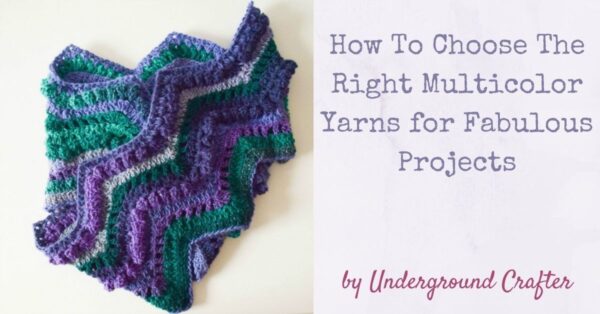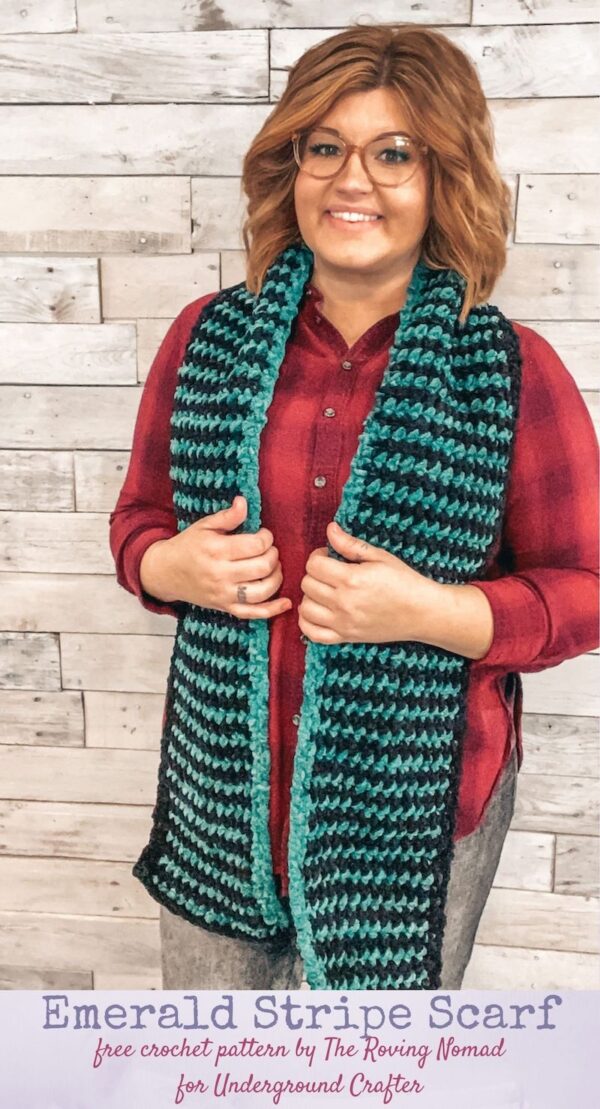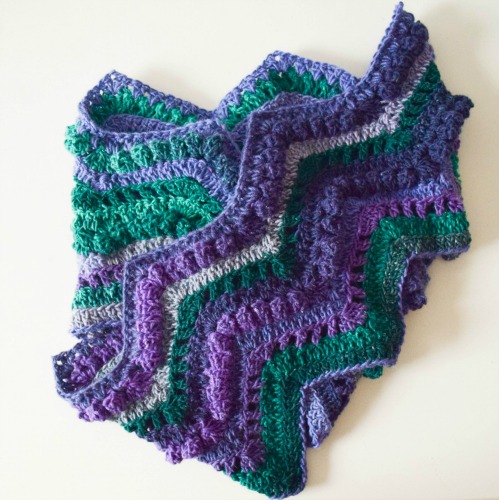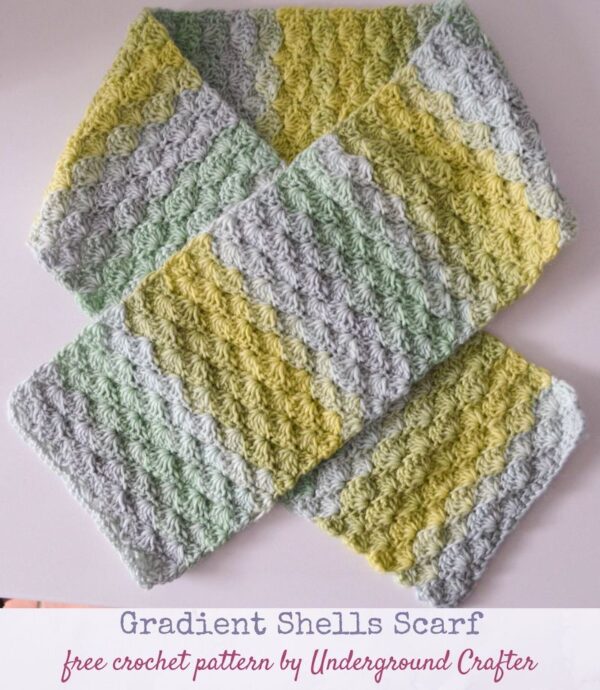I know I’m not the only one who has fallen in love with a multicolor yarn at a fiber festival, my local yarn shop, or in a hobby store… and then broke up with it once I got home. If you’d like to restart the romance with your favorite multicolor yarn, I’m sharing my tips for pairing each of the three major types of multicolored yarns with projects.

This post contains affiliate links. I may receive compensation (at no added cost to you) if you make a purchase using these links.
There are three main types of multicolor yarns: semisolid yarns, variegated yarns, and self-striping yarns. In this post, I’ll explain the differences between each type of multicolor yarn and recommend several project ideas.

Semisolid Yarns

Semisolid yarns are typically hand dyed and are by far the easiest multicolored yarns to use successfully. These yarns have subtle variations in color, and may even look like a solid yarn at a distance. Up close, the details of the color become more apparent and make the resulting project very striking.
Project ideas for semisolid yarns
With semisolid yarns, you can use complex stitch patterns while still allowing the yarn to shine. Since the details of the yarn are most visible up close, choose a stitch pattern or project you’d like to “show off,” like a go-to accessory.
Variegated Yarns

Variegated yarns have short color repeats. Each section of color is relatively short so the changes between colors are more dramatic than in other multicolor yarns. Variegated yarns sometimes “pool” by creating large blocks of one color. While some knitters and crocheters find pooling distressing, others enjoy it.
Project ideas for variegated yarns
Simple stitch patterns usually work best with variegated yarn since the details of complex stitch patterns will be “lost” in the color changes once the project is finished. There are several different approaches you might want to consider.
- Avoid pooling by holding two strands of the yarn together while knitting or crocheting. If you start each strand with a different color within the yarn, you will “break up” the pooling.
- Or, hold one strand of solid yarn with one strand of variegated yarn to create a project with a tweed look.
- If you’re more mathematically inclined, search for “planned pooling” or “intentional pooling” to learn more about how to create a project where you control the pooling effect of variegated yarn. Or, try the Emerald Stripe Scarf for an easy introduction to planned pooling.

Self-Striping Yarns

Self-striping yarns are also known as self-patterning or long color repeat yarns. The changes between colors are gradual and the length of each color is longer, so these yarns create the appearance of stripes in your work.
Project ideas for self-striping yarns
Self-striping yarns are a great substitute for actual striping because you have many fewer ends to weave in! Use self-striping yarn in any striped pattern with great results. If the colors are striking enough, both a simple stitch pattern (like the one below) and a more complex stitch pattern (like the one above) will look fabulous.

To keep your striping pattern consistent, when adding a new ball of yarn to your project, start using the same or the next color in the striping sequence.
By the way, you may want to consider buying extra self striping yarn if you are substituting it in a pattern that was originally designed with another type of yarn. This will allow you to start and end the ball at the right point in the color sequence without running out of yarn.


I love this kind of yarn. I think it makes whatever you are making beautiful. We all need more yarn like this! THANKS!!!
Connie F.
Glad the tips could help, Connie F!
Thanks for the tips. I will have to give those skeins that now live in the “what was I thinking” bin, a second look.
Haha, I know all about those skeins, Tanya!
I would add with long colorways, look at the way the color changes, I have had yarn I had to cut out because the change was a muddy ugly brown between green and purple. It was seriously ugly!!
Maybe “ugly” to you while someone else may absolutely be over the moon for that combo. I wouldn’t have addressed the need to cut either as that is a personal choice and what pleases the owner of said yarn’s eye.
Nice write up, Marie. I didn’t learn anything new but maybe next email I will! I enjoy working with all the yarns, especially the self-striping and the long runs color changing yarns. A nicely variegated is always in my stash, too. Oh heck I love them all! 😉
I love a variegated yarn but often have trouble using it. Thanks to the tips and for explaining the differences.
I love the multicolored yarns, didn’t realize there were different types. Wish I could find more of them. I make a lot of dog sweaters and they come out so cute with this kind of yarn.
Love that Thaden’s Asymmetric shawl! I’ve been pretty confident about using multicolored yarns, but it’s always nice to get validation…and some new pattern ideas.
Thanks!
I once bought a very pretty yarn, but no matter what pattern I tried with it, I didn’t like how it looked. It didn’t look right in any pattern with straight rows.
In frustration, I tried it in a round pattern – and I finally found a way to use it! It looked great in rounds instead of rows!